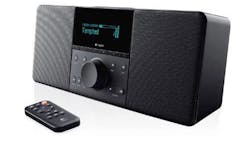Verizon runs a 3G, 4G, and now 5G wireless network and has decided to keep running the 3G network, for now. One reason for shutting down their 3G is to get access to the spectrum used to support 3G. The main reason for not shutting down 3G is that it would disconnect a lot of devices, including modems in cars and even some cell phones. The Internet of Things actually started with 3G devices, and these also would be isolated.
Many 3G users will be relieved to know that at least Verizon will keep 3G running indefinitely, which brings me to the real reason for writing this article: The ability to mitigate these kinds of disasters that occur more often than we like. The relatively recent migration to digital TV is a similar example, where “progress” created heartache and tons of electronic trash. This likely made the movement to flat-panel TVs even quicker, as older units were replaced with new ones that could handle the digital signals. Of course, better resolution was a major factor as well.
The challenge with respect to 3G is that replacement of a 3G device with a newer one is often impossible, although in many instances the issue becomes replacement cost. It’s the former where the “right to replace” comes into play—it’s similar to the “right to repair” issue that’s been getting more traction.
However, two problems arise with the right to replace and the right to repair: warranties and digital rights management (DRM). DRM has been associated with protecting content from copying or unwanted use, but it’s also being used to enforce monopolies. It’s commonly used on printer cartridges, though even battery packs and IoT devices typically utilize DRM for the same purpose.
Eventually 3G will go away. It’s inevitable. The payback for keeping that portion of the network running will be overridden by the money to be made on using the spectrum for 5G or 6G. This opens up opportunities to replace those 3G devices with newer ones, but often the original manufacturer isn’t interested in supporting older systems. That doesn’t mean no one would want to do this, especially given platforms like Kickstarter that can garner support from smaller groups. Open-source projects are another area where support for older hardware and software platforms can be found.
Oftentimes, the restricting factors for success of these efforts involve system documentation. It could be as simple as a schematic or a few key values for a communication protocol. Unfortunately, DRM is regularly the issue, something that will be more common as security has become more ingrained in hardware and software design.
Don’t get me wrong. I’m all for more inclusion of hardware and software security. I don’t want my car, TV set, or other device hijacked and used against me or others. On the flip side, I don’t want services that I have in my car going away because a vendor or service provider decided that the infrastructure will no longer provide this support or service, and will be switching to some other method.
Much of the hardware I’ve discarded lately has been due to the inability to migrate the device to a newer environment, even though the device would have that capability with updated software.
Right-to-replace software or hardware that allows a device to continue to be useful has similar requirements to right to repair, which is slightly different. Right-to-repair advocates typically must fight with vendors that are actively trying to prevent others from repairing broken devices. Sometimes the vendors have a competing repair service or want to prevent repairs to force users to buy a replacement.
Right to replace differs in that vendors are typically abandoning support of older devices. In many cases, they eliminate them completely from their support websites.
Not everyone will want to repair or replace components. Most will not have the ability to do so on their own, but would be willing to have someone else do it. I’ve been lucky with some devices. For example, I fixed a large LCD display by replacing two capacitors and a printer that required repairing a cable connector. These would otherwise have wound up in the junk pile.
In another example, I have a Logitech Squeezebox Boom music player that will eventually contain a Raspberry Pi (see figure). Unfortunately, the buttons will not work, but at least the sound system will be reused. Check out the piCorePlayer if you’re interested.
The rise in awareness that recycling isn’t a great solution, especially when it comes to electronics, and the fact that more devices are being forced into retirement, will likely add to the efforts of the right to replace and repair.
We can only hope.
About the Author
William G. Wong
Senior Content Director - Electronic Design and Microwaves & RF
I am Editor of Electronic Design focusing on embedded, software, and systems. As Senior Content Director, I also manage Microwaves & RF and I work with a great team of editors to provide engineers, programmers, developers and technical managers with interesting and useful articles and videos on a regular basis. Check out our free newsletters to see the latest content.
You can send press releases for new products for possible coverage on the website. I am also interested in receiving contributed articles for publishing on our website. Use our template and send to me along with a signed release form.
Check out my blog, AltEmbedded on Electronic Design, as well as his latest articles on this site that are listed below.
You can visit my social media via these links:
- AltEmbedded on Electronic Design
- Bill Wong on Facebook
- @AltEmbedded on Twitter
- Bill Wong on LinkedIn
I earned a Bachelor of Electrical Engineering at the Georgia Institute of Technology and a Masters in Computer Science from Rutgers University. I still do a bit of programming using everything from C and C++ to Rust and Ada/SPARK. I do a bit of PHP programming for Drupal websites. I have posted a few Drupal modules.
I still get a hand on software and electronic hardware. Some of this can be found on our Kit Close-Up video series. You can also see me on many of our TechXchange Talk videos. I am interested in a range of projects from robotics to artificial intelligence.


